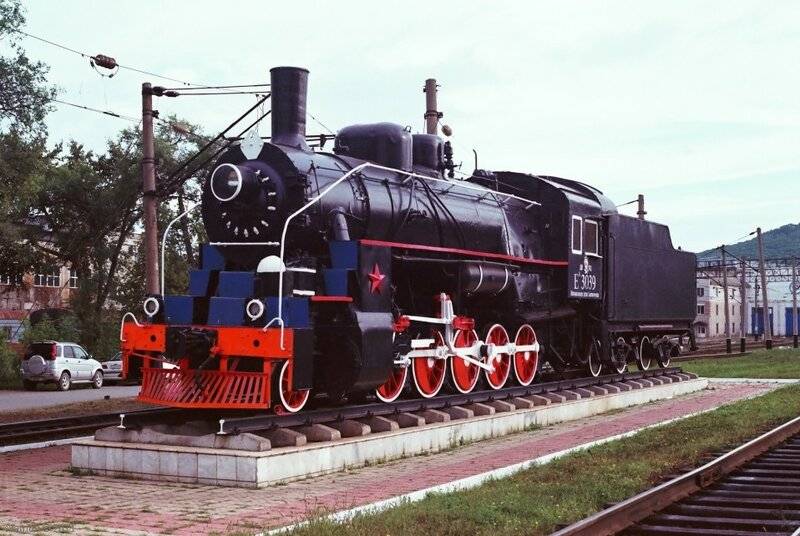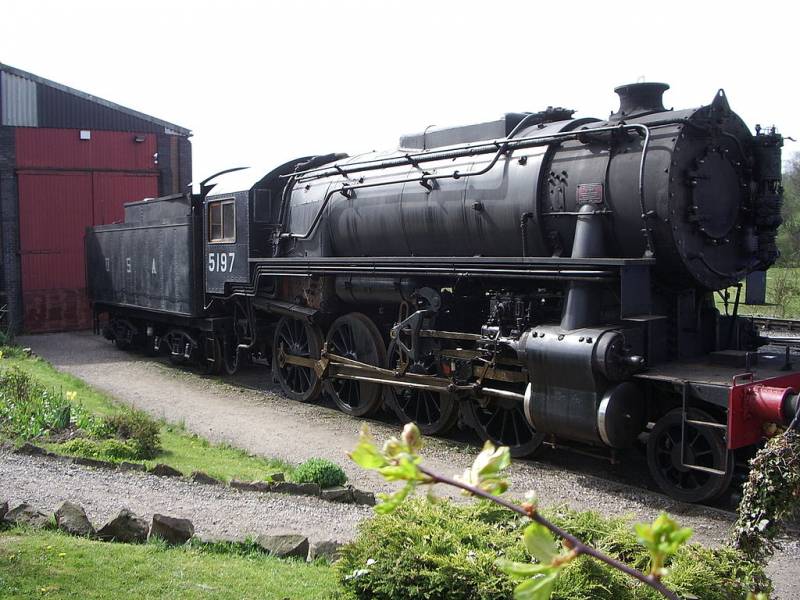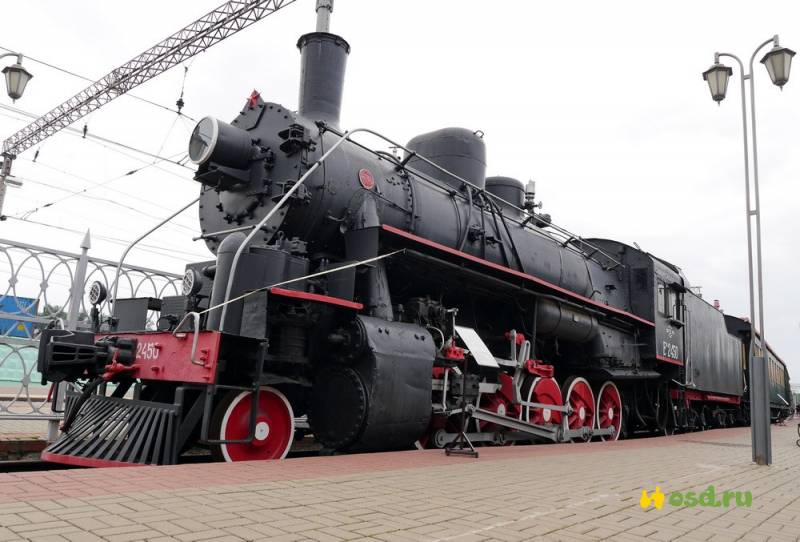Steam locomotives from across the ocean
Paradoxically, the temporary loss of the territories of the USSR for the time being, if I may say so, was in the hands of the NKPS. The loss of locomotives and wagons turned out to be not so critical - after all, the roads were under the occupier. He had to develop a military locomotive (it was written about in a previous article) in order to establish transport links on these routes.
And in 1943, everything turned out the other way around - the enemy began to roll back to the west. The length of the railway tracks began to increase, and then the question arose of how to serve them - during the war years, our factories produced only ... 292 steam locomotives:
• in 1941 - 200 pieces.
• in 1942 - 9 pieces.
• in 1943 - 43 pieces.
• in 1944 - 32 pieces.
• and in 1945 - 8 pcs.
As you know, the factories evacuated to the rear, deprived of their production bases and ties with subcontractors, completed the construction of locomotives from pre-war reserves. Many of the manufacturers generally switched to military products and produced parts for tanks, guns, other equipment.
"Sha"
In this situation, on April 10, 1943, the chairman of the State Defense Committee, I. V. Stalin, signed Decree No. 3159c: "On the order and delivery of steam locomotives from the USA and rails for the NKPS in 1943-1944"
The Allies quickly responded, especially since historical there was already a backlog in this area.
Here we need to make a small digression.
Even during the First World War, Russia ordered steam locomotives in America. Yes, there was such a fact. In the USA and Canada, steam locomotives were made for us, delivered by sea, and they were safely used on the roads. These were the E-series steam locomotives. "Elena", "Efim", as the machinists affectionately called them. One of the sad facts is that it was in the furnace of such a locomotive that the revolutionary Sergei Lazo was burned.
And now, the wheel of history has made a turn - a new order for an obsolete, in general, but such a necessary steam locomotive. Moreover, the car was familiar, repair, maintenance and operation were debugged.
But there was also a problem: locomotives were needed "yesterday". That is, the USSR wanted to start receiving them by the end of 1943. The ALKO and Baldwin factories, which previously produced these locomotives, could not rebuild the enterprises so quickly, and then it was proposed to start by supplying the USATC S160 model to Soviet Russia, which was specially designed for lend-lease deliveries to foreign countries. Conventionally, this locomotive can be attributed to "military locomotives", although it would be more correct to call it "a locomotive without luxury." In its design, everything was reduced to saving materials and simplifying.
Locomotive wheel formula 1-4-0, weighing 74 tons, machine power 850-1000 l / s. Speed - 70 km / h, water supply - 24,5 cubic meters, coal - 10 tons.
Initially, a batch of 150 steam locomotives was ordered, later increased to 200.
American industrialists did not let us down - at the very end of 1943, the first locomotives "Sha" ("Sh" - Russian locomotives similar in formula, "a" - American) arrived in the USSR.
On January 1, 1944, there were 44 of them. They were transported on ships of sea convoys to the ports of Murmansk, Vladivostok and Molotovsk. From there - by rail to Moscow. Until 1947, they led the trains on the October Railway, serving the direction Moscow - Leningrad, as well as on the Belarusian, Estonian, Volga and Kazan railways.
In 1957, 50 "Sha" were converted to 1067 mm gauge and sent to serve on Sakhalin.
I posted a photo of this locomotive on the screensaver.
"Elena"
Now about the second locomotive.
As I mentioned above, it was known to the Soviet railway workers under the nickname “Elena”, where “E” is a type of steam locomotive, and “l” is the capital letter of engineer A. I. Lipets, who made many design changes and improvements to the car.

A quarter of a century later, steam locomotives of this series also began to arrive from across the ocean. Already improved and with minor changes. There was a different driver's booth, an American-type track clearer, a stoker (mechanical coal feeder) "Standard NT-1" appeared. The main distinguishing feature: the headlight "migrated" from the chimney below - to the frontal part.
Thanks to design improvements, the power of the steam engine increased by 20-25%.
Briefly about the car: the axial formula 1-5-0. Weight - 85-103 tons. Power - 1950 l / s. Speed - 55 km / h.
In America, these locomotives were called "Russian decapod". In our country, they were registered under the index "Ea" "type "E", American."
The cars arriving from overseas were carefully received and carefully studied, after which the leading engineer V.V. Ivanov, through the NKPS, suggested that American manufacturers make some design changes. So the models "Em" and "Emb" appeared.
In total, 2 vehicles were delivered to the USSR: 047 - "Ea", 1 - "Em" and 622 - "Emv". Locomotives were used on almost all railway lines of the European part of Russia. Later, when domestic factories launched the production of new steam locomotives, these machines began to be “squeezed out” on the roads of Siberia, Transbaikalia and the Far East. There, on highways, they served until the 412s, and in shunting until the 13s.
And finally, a semi-myth, a semi-legend.
There is such a story that in every steam locomotive that arrived in the USSR from across the ocean, a set of overalls for the locomotive brigade, a box of stew and a bottle of whiskey were hidden.
There is no official confirmation of this, but, knowing how the American tanks were "packed", one can believe it.


Information